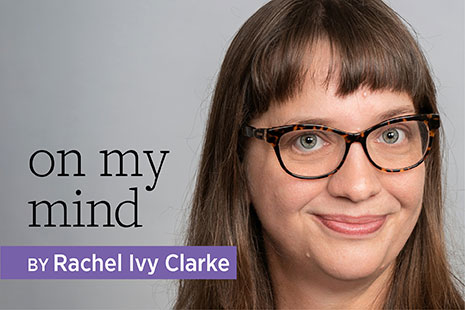
A popular method for quantifying a library’s value is to tally the money a patron saves by borrowing rather than purchasing materials, sometimes even printing a dollar amount on a receipt or offering an online calculator. The problem with these metrics is that they almost always focus on items rather than the intangible services that library workers provide. If we focus exclusively on the retail value of materials, we render the labor that goes into providing services invisible.
Invisible labor is a concept from feminist scholarship that aims to bring attention to underpaid, unrecognized, and undervalued work, often performed by women. Household work is an example, but the term also applies to some intellectual work, like that performed in libraries. When a job is done well—a program goes off without a hitch, for instance, or workers successfully introduce a new service like curbside pickup—the labor it took to accomplish it becomes less visible to those who benefit, and thus harder to articulate to the administrators and legislators who allocate resources. It’s a vicious cycle.
At Syracuse (N.Y.) University’s iSchool, my project team wanted to experiment with ways to make library work more visible to patrons, administrators, and other stakeholders. To do this, we drew on the idea of critical design, a specific form of activist research inquiry that uses the creation of provocative artifacts to challenge established assumptions and spur people to think in new ways. The artifact we created is a prototype library value calculator that includes the costs of labor as well as materials and presents both calculations to the user. Our team was surprised to find that the average labor cost is almost always higher than the cost of materials.
If we don’t see work, we start to doubt the necessity of that work and the people who perform it.
Invisible labor may also affect library staffing. If we don’t see work, we start to doubt the necessity of that work and of the people who perform it. Staffers may be driven to quit and positions may be eliminated and not replaced. In turn, the work may be loaded onto other workers, who must then do more labor that goes unrecognized and unvalued. We can’t be surprised at low morale in the profession when we ignore the contributions of the workers holding the field together.
We need to clearly and explicitly move beyond the idea that the value of a library is rooted in its collections. Let’s start by doing away with the idea that everything in libraries is free. Instead, we can promote the idea of the library as co-op: an organization owned and operated by the people who use its products and services and benefit from what it has to offer. Public libraries are already part of the way there, as they are funded with community tax dollars and donor support. The values they support, such as democracy and equity, are shared by co-ops. Reframing libraries in accordance with a co-op model could offer more opportunities for community members to actively participate not only in consumption of library services but also in library service provision—things like working or volunteering at the library in traditional roles, leading community programs, and advising on the design of new services. (Read more about co-op structure and principles.)
While monetary estimations of value can be an important means of securing funding and a place at the table for libraries, we must also consider other opportunities libraries might leverage to emphasize their value. For example, inviting narrative or visual accounts that express the library’s importance—such as asking patrons to write valentines to the library—is a nontrivial way of allowing community members to convey their understanding of the library’s value in their own words.
If we truly want to advocate for libraries, then we must stop focusing solely on buildings and resources and start supporting the people who make them accessible. We can start by making their work visible.


